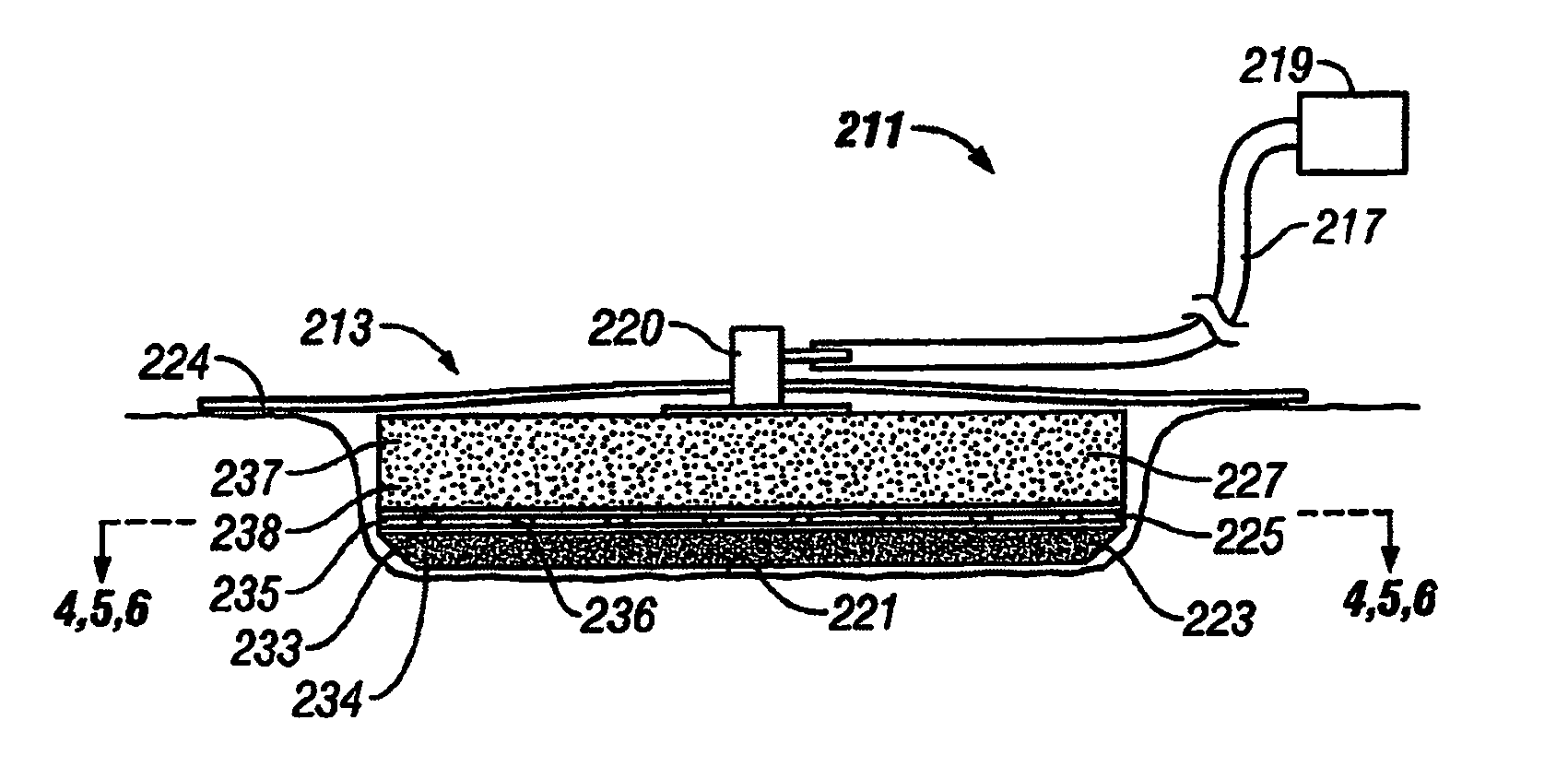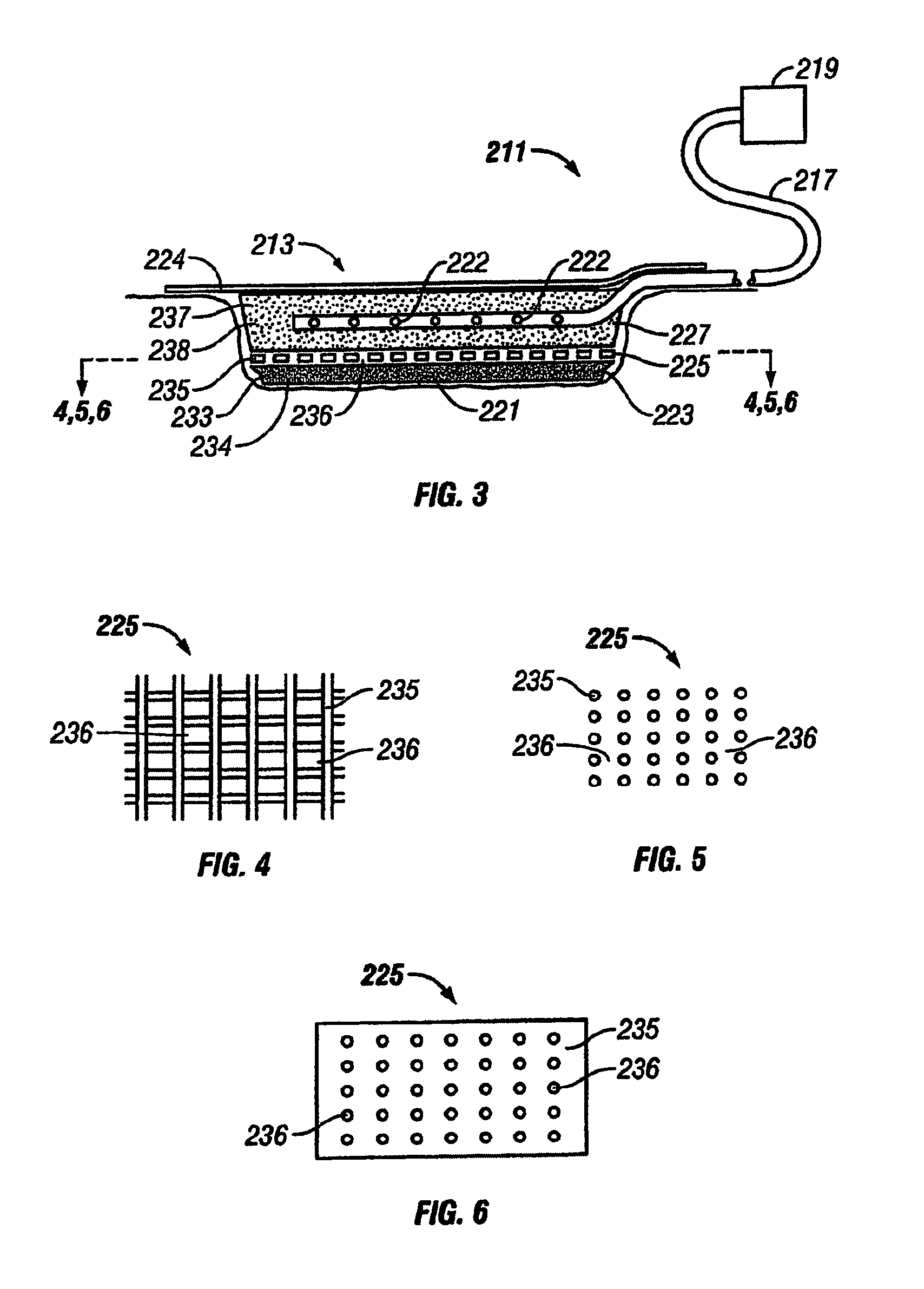Biocompatible wound dressing
a wound dressing and biocompatible technology, applied in the field of tissue growth promotion systems or methods, can solve the problems of reducing oxygen and nutrients, affecting wound healing, and affecting the healing effect of wounds, so as to reduce pressure tissue treatment and reduce pressure delivery
- Summary
- Abstract
- Description
- Claims
- Application Information
AI Technical Summary
Benefits of technology
Problems solved by technology
Method used
Image
Examples
example i
[0045]The above described open celled foam is formed into a pad. The general principles set forth in U.S. Pat. No. 5,795,584 issued to Totakura et al on Aug. 18, 1998 at Col. 5 lines 5 42, are followed to create a structure superimposed on the bottom of the pad. Holes are placed in those portions of the non-bioabsorbable substrate relatively remote from the bioabsorbable cell growth enhancing matrix substrate. The matrix covers a portion of the pad located within the boundaries of the wound being treated. The pad is then completely covered by an airtight drape, and subjected to sub atmospheric pressure, as is the standard practice for utilizing V.A.C.® therapy. The matrix is absorbed within the expected useful life of the pad, so, that when the pad is removed, the matrix had been absorbed, and the growing cells are not disturbed. The pad is replaced, if necessary, either by a conventional pad or by a matrix containing pad, as deemed therapeutically necessary.
example ii
[0046]A conventional pad is selected. A collagen cell growth matrix is applied to a portion of the bottom thereof. The general principles of V.A.C.® therapy are followed, with the matrix containing pad substituted for a conventional pad. During the expected duty cycle of the pad, the collagen matrix is absorbed by the growing cells, so that when the pad is removed, the matrix had been absorbed, and the growing cells are not disturbed. The pad is replaced, if necessary, either by a conventional pad or by a matrix containing pad, as deemed therapeutically necessary.
example iii
[0047]The procedure set forth in EXAMPLE II is followed. However, an ultra-low density fused-fibrous ceramic, sometimes referred to under the trademark P.R.I.M.M., is substituted for the collagen matrix thereof. The general principles of V.A.C.® therapy are followed. During the expected duty cycle of the pad, the ultra-low density fused-fibrous ceramic is absorbed by the growing cells, so that when the pad is removed, the ultra-low density fused-fibrous ceramic had been absorbed, and the growing cells were not disturbed. The pad is replaced, if necessary, either by a conventional pad or by a matrix containing pad, as deemed therapeutically necessary.
PUM
| Property | Measurement | Unit |
|---|---|---|
| thickness | aaaaa | aaaaa |
| diameter | aaaaa | aaaaa |
| diameter | aaaaa | aaaaa |
Abstract
Description
Claims
Application Information
 Login to View More
Login to View More - R&D
- Intellectual Property
- Life Sciences
- Materials
- Tech Scout
- Unparalleled Data Quality
- Higher Quality Content
- 60% Fewer Hallucinations
Browse by: Latest US Patents, China's latest patents, Technical Efficacy Thesaurus, Application Domain, Technology Topic, Popular Technical Reports.
© 2025 PatSnap. All rights reserved.Legal|Privacy policy|Modern Slavery Act Transparency Statement|Sitemap|About US| Contact US: help@patsnap.com



